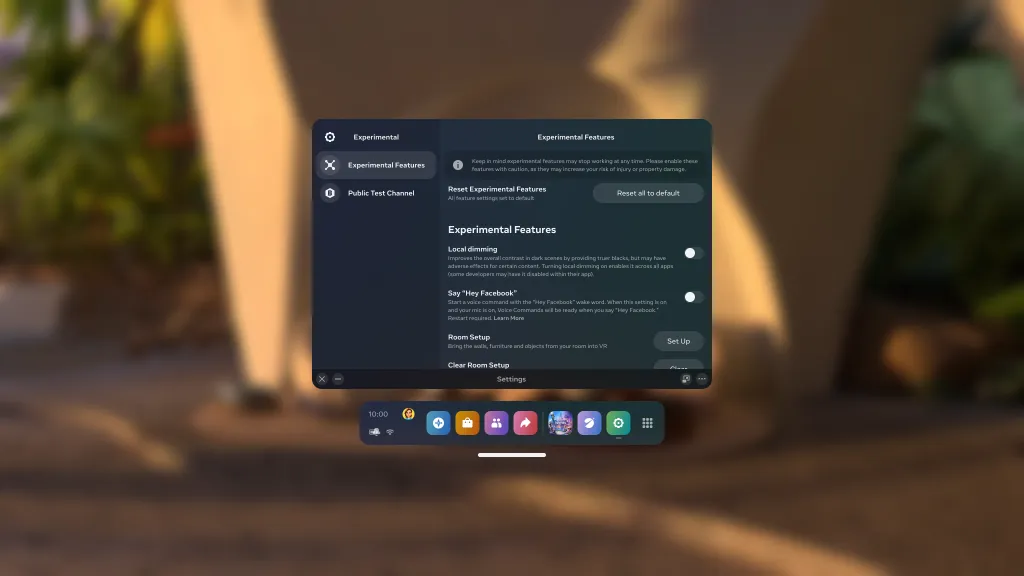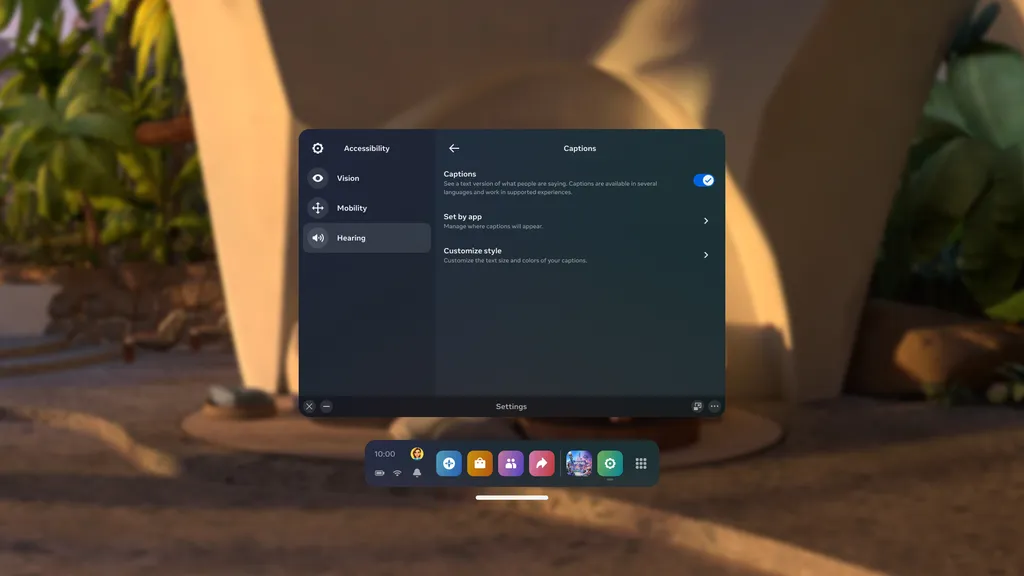Version 56 appears to be the most feature-rich update in recent memory. As always, Meta rolls out system updates gradually over several weeks.
2.2 Hand Tracking
Meta has been continuously improving the technology since rolling out a software update for controller-less hand tracking to the original Oculus Quest in late 2019.
Last year's 2.0 update improved handling of three situations that often caused the original algorithm to fail: fast motion, hand occlusion, and hand contact. Then, January's 2.1 update reduced track loss and accelerated track reacquisition.
The 2.2 hand tracking introduced by v56 is called reducing hand tracking delay and "making the experience closer to the controller". Meta claims up to 40% of latency reduction in normal use and up to 75% in fast motion.
Hand Tracking 2.2 also introduces a new Fast Motion Mode (FMM), which Meta says improves tracking of "fast motion" that's common in fitness and cadence apps, but doesn't mention the trade-offs.
To demonstrate how hand tracking is progressing on the Quest, Meta released a demo app called "Move Fast," showing how it can be used in fast-paced scenarios.
Automatic Power Update
Probably the worst part of the standalone VR experience is waiting for app updates. Unlike other media, you're basically wearing a blindfold and can't easily use your phone, eat or drink. Worse, the update's progress isn't visible outside of the headset, so you're just constantly checking.
While Meta recently updated the Quest to automatically update apps while charging and added an "update before powering off" toggle to the shutdown interface, there is still an unresolved case where the headset battery drains during gameplay.
Plugging in your headset will charge it, but it won't update because the device isn't powered on. However, v56 added an option to solve this problem. When you plug in your headset, it will automatically power on and download apps and system updates.
The v56 also displays the battery level on the shutdown interface. Meta's release notes also mention other unspecified improvements to low battery warning notifications.
System-wide local dimming on Quest Pro
Most LCD panels have at best a few backlight LEDs illuminating the entire display, severely limiting the contrast between dark and bright areas. You may have noticed that they appear dark gray instead of true black. In VR, this seriously affects the believability of night and space scenes.
The main advantage of OLEDs (such as PlayStation VR2 and Bigscreen Beyond) over LCDs is that there is no backlight, each pixel is self-illuminating, enabling infinite contrast and true blacks.
LCD panels with local dimming, such as the Quest Pro panel, offer a middle-of-the-road solution. They have multiple backlights to control the brightness of the zones - over 500 mini LEDs in the Quest Pro's case.
Local dimming on the Quest Pro is per-app select. App developers must enable it. Otherwise, all 500+ backlights together use the same brightness as a regular LCD.

With v56, Meta added the option to enable system-wide local dimming if the app is not explicitly opted out by the developer.
It's important to note that local dimming has an obvious trade-off: blowout. Since the backlight resolution is much lower than the color resolution - in the Quest Pro there are just over 500 mini-LEDs for nearly 4 megapixels - many adjacent dark pixels are illuminated as well. Mini-LEDs are a big step up from traditional LCDs, but they can't completely replace OLEDs.
Facebook Live Replay
Both the original Oculus Quest and Quest 2 supported live streaming to Facebook, but Meta removed the feature in 2021, citing low usage, relative to local casting.
Two years later, Meta claims the feature is back as an experimental update based on user demand and will be "rolled out gradually", separate from the main v56 update.
Unlike previous implementations, the new feature will display a floating persistent panel showing current audience size and live chat. Will Meta finally add native live-streaming support for Quest to other streaming platforms?
Home live captions and button remapping
v56 also brings two new optional accessibility features.
Homepage Live Captions will display floating captions for any playing audio in Homepage apps such as Quest TV, the Discover tab, and the Quest Store. However, the company says it is exploring the possibility of extending it to other applications, possibly system-wide.

Button remapping is another accessibility-oriented feature. Meta says you'll be able to swap buttons, create custom layouts, and more.
Swipe input on the virtual keyboard
v56 also adds swipe input to the virtual keyboard as an experimental feature, as some testers on the public beta channel observed last week.
Swipe typing is an input method available on smartphones, and some people find it faster than typing key-by-key.
Swipe typing may be especially useful for virtual and augmented reality, since virtual keyboards have no physical tactile resistance.





